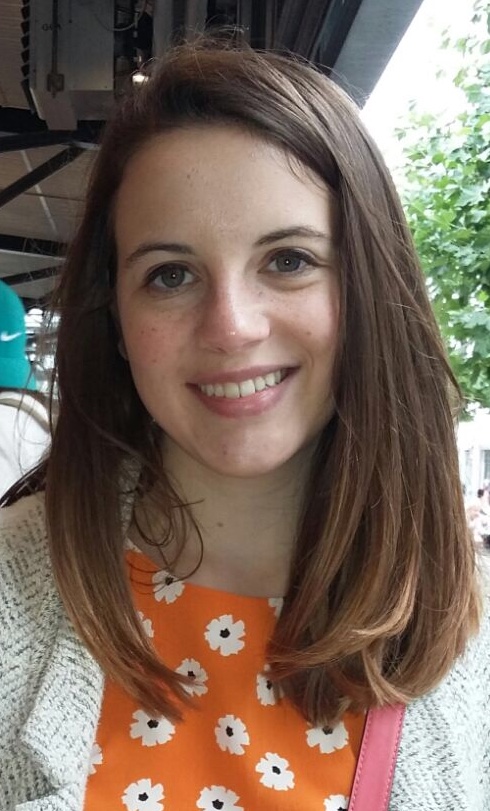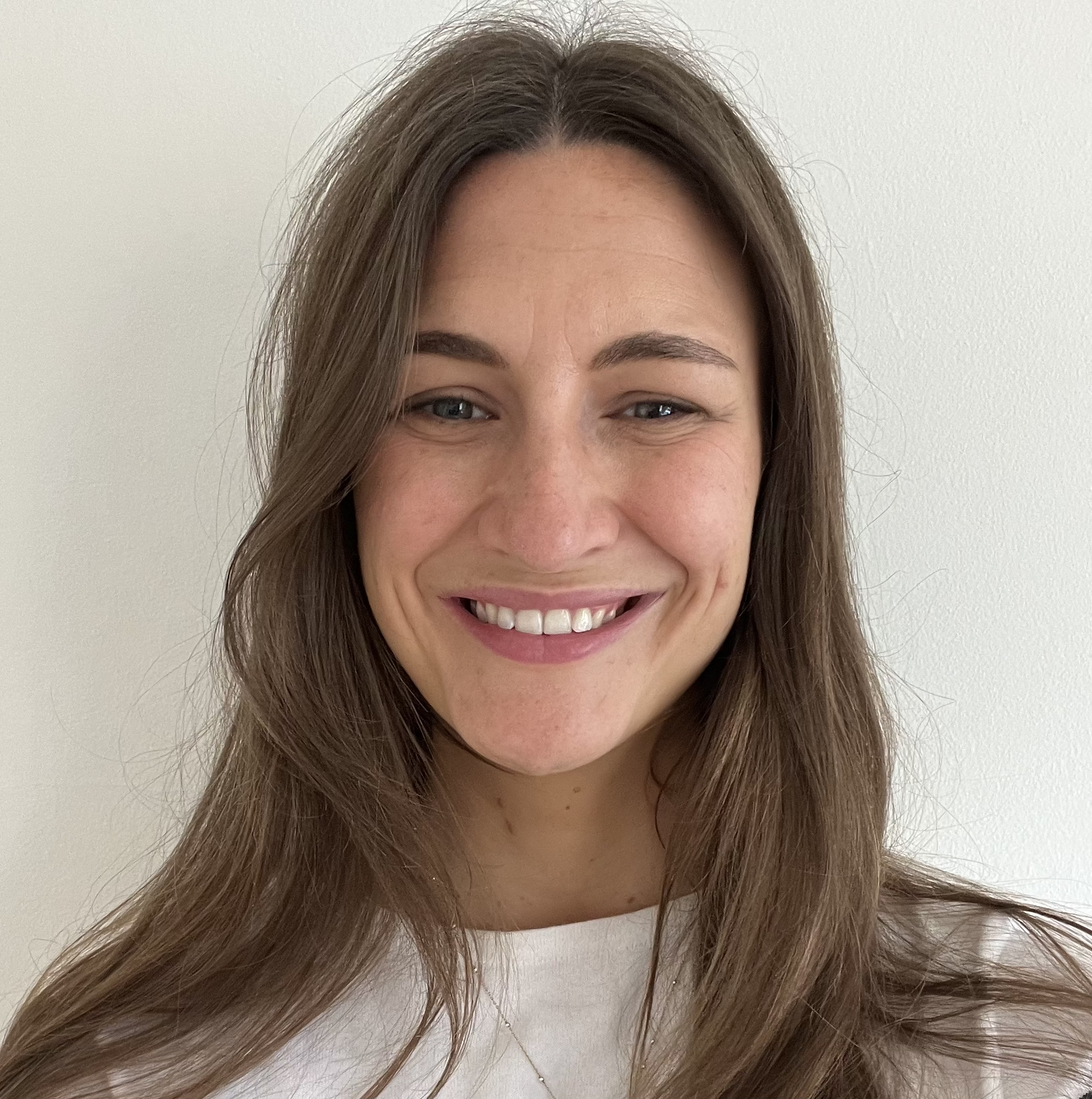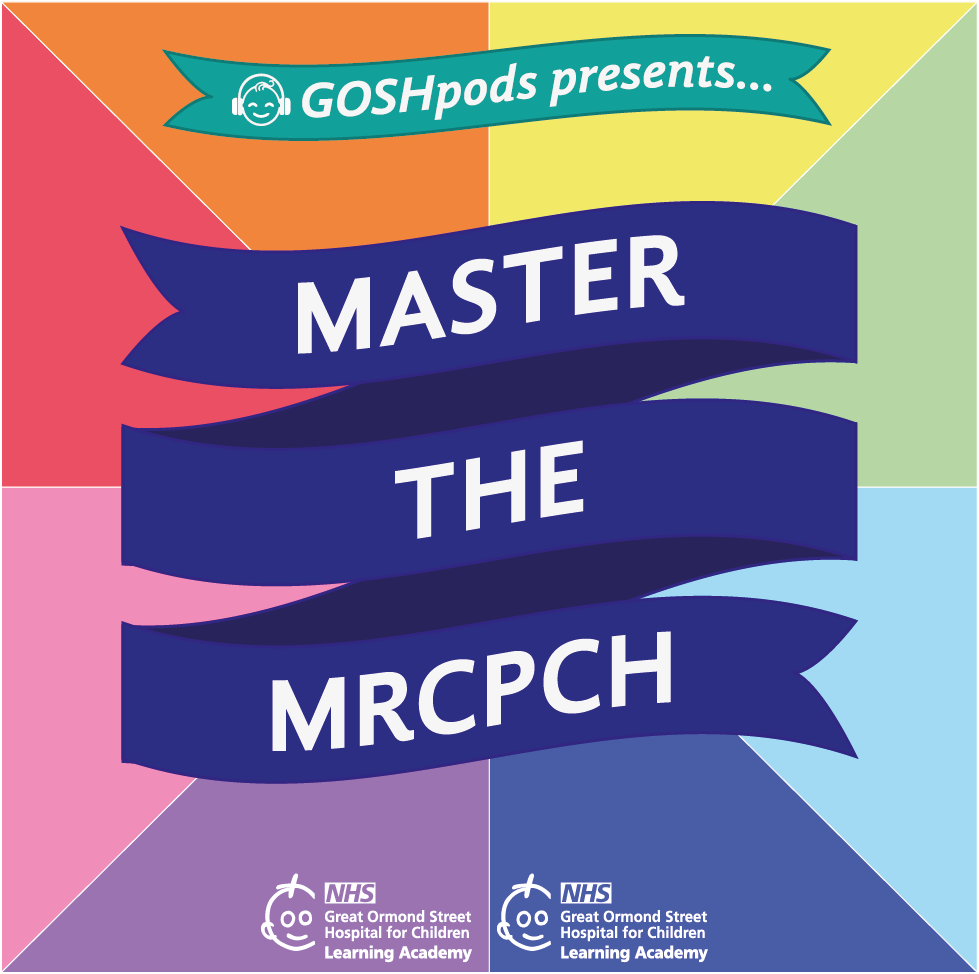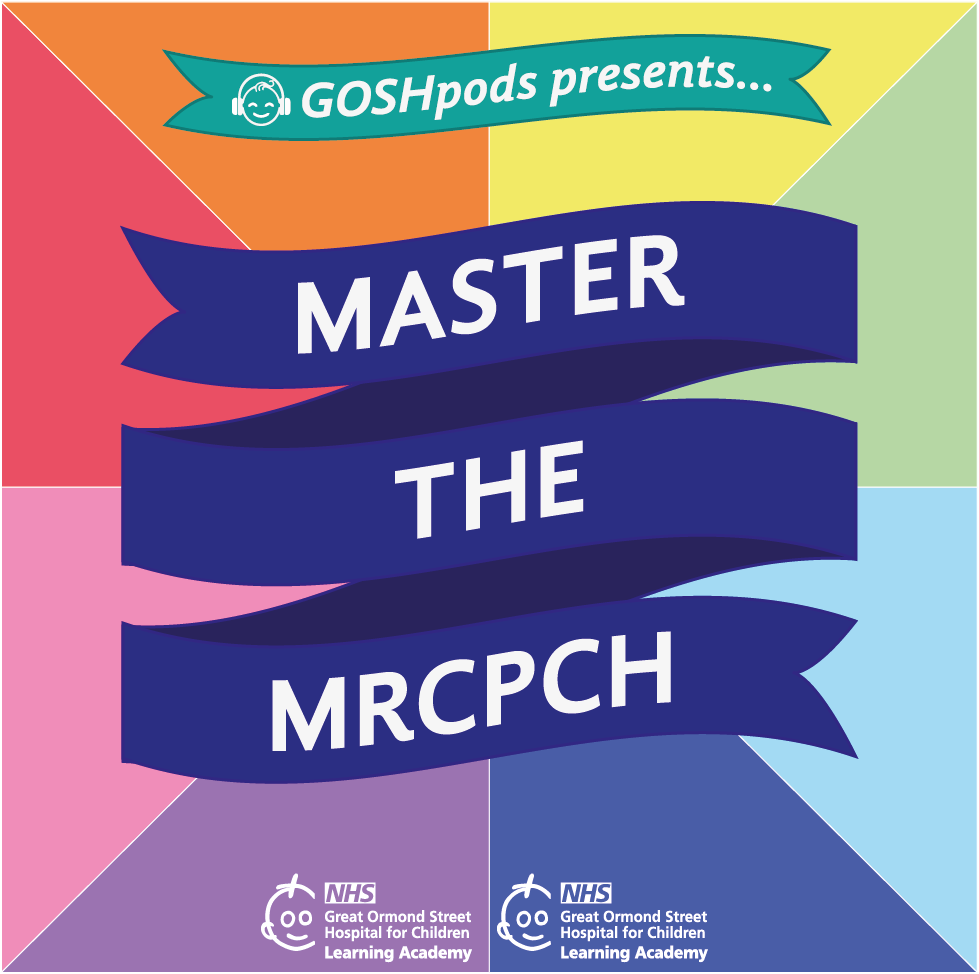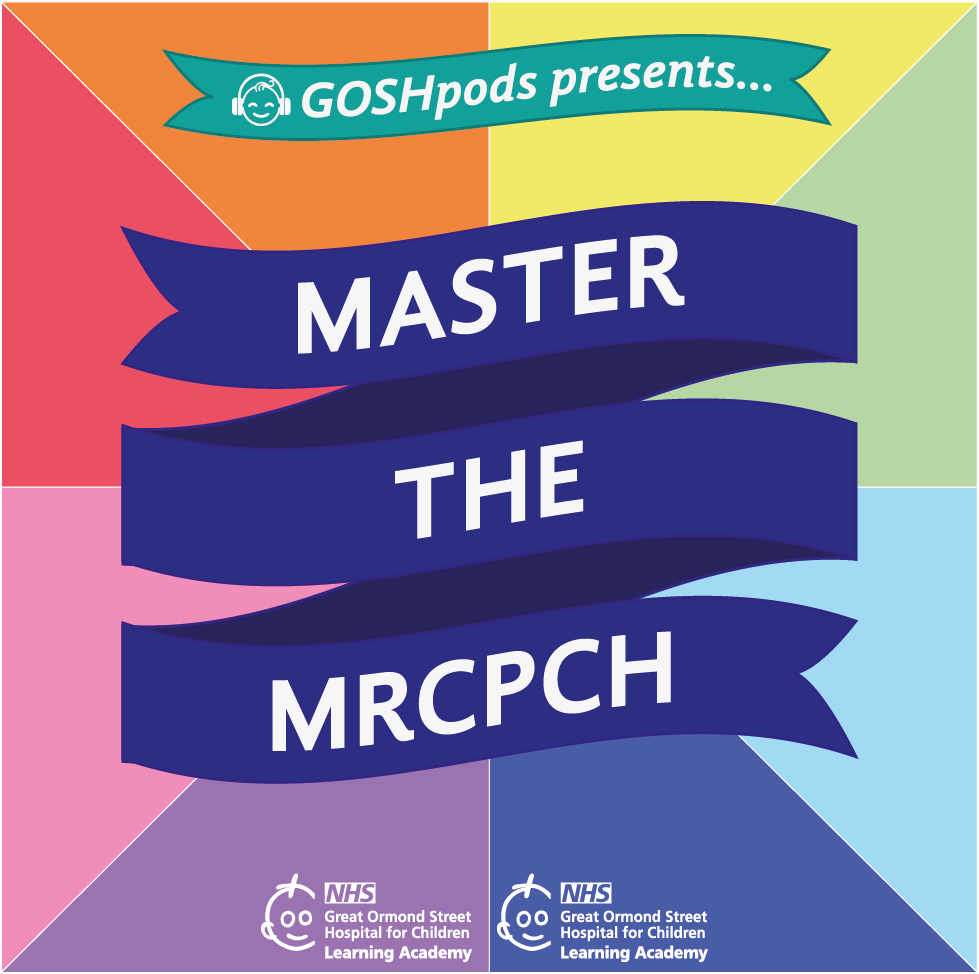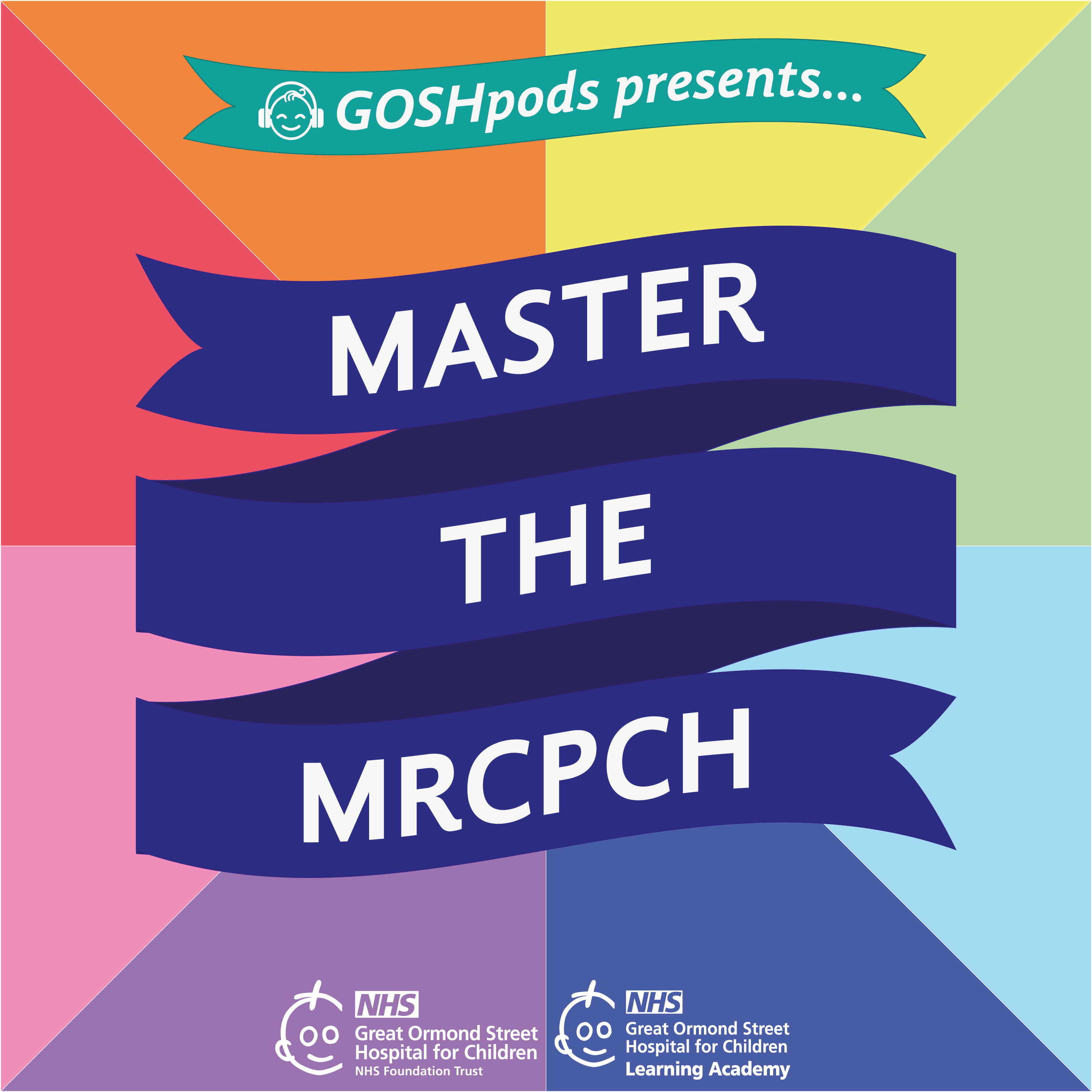This Podcast is brought to you by the GOSH Learning Academy.
Hello, and welcome to Master the MRCPCH. In this series, we tap into the expertise here at Great Ormond Street Hospital to give you an overview of a topic on the RCPCH exam curriculum. So whether you're revising for an exam or just brushing up on a need to know topic, hopefully this podcast can give you the information that you need.
I'm Dr. Sarah Ahmed, a paediatric registrar and the current digital learning education fellow here at GOSH.
In today's episode, we're going to be talking with Professor Juan Kaski about cardiomyopathies. Professor Kaski is a consultant paediatric cardiologist at Great Ormond Street Hospital and the Director of the Inherited Cardiovascular Diseases Unit at GOSH.
Cardiomyopathies map to the cardiology section of the exam curriculum.
In part one, we're going to discuss definitions, epidemiology, and causes of cardiomyopathy. In part two, we're going to go into more detail about the different types of cardiomyopathy.
Professor Kaski previously recorded an episode for us on hypertrophic cardiomyopathy, where we go into far more detail than we're going cover here. Do be sure to check that out. You can find it on the GOSHpod's Practicing Paediatric series, where we do some real deep dives into specialist conditions that we treat at GOSH.
Juan, thank you so much for coming back on the show today.
JK: Thank you very much, sir. It's a pleasure to be here.
SA: So we're going to talk about cardiomyopathies today. So let's start with some learning outcomes. What kind of things would you like people to take away from listening to this episode?
JK: So I think probably the main thing that I'd like people to be aware of is just fact that cardiomyopathies are out there and for people to think about the possibility of a cardiomyopathy when they encounter a patient with signs and symptoms that might be sort of pretty non-specific and just to in, in their minds the possibility that the patient they've got in front of them with that particular presentation might have a cardiomyopathy.
And I guess the second thing is that it's just an idea that cardiomyopathies can also coexist with other conditions. And so just to have that in their minds when they're seeing a patient.
SA: I do think it's one of those things that we kind of know a little bit about, but maybe don't know enough about and so sometimes it does fall off that differential diagnosis list. So hopefully we can change that today.
JK: Perfect.
SA: So let's start with some definitions, start really basic. How would you define a cardiomyopathy?
JK: So, cardiomyopathy is essentially a disease of the heart muscle. The sort of proper definition of a cardiomyopathy is a heart muscle disease that is not explained by other causes, so things like congenital heart disease, valvular heart disease, hypertension, coronary artery disease in the adult. But that particular bit at the end is that the degree of the abnormality in the myocardium that you're seeing cannot be solely explained by these other things. But this is what I was alluding to earlier on, that you can actually have a cardiomyopathy in somebody who has hypertension, or you can have a cardiomyopathy in somebody who has congenital heart disease. It's just the degree of myocardial abnormality that you're seeing isn't solely explained by these other factors.
But in very simple terms, cardiomyopathy, heart muscle disease.
SA: And I mean, we've alluded a little bit to this already, but is it a common condition in paediatrics?
JK: So it's certainly far less common in children than it is in adults. There are different types of cardiomyopathy, but we think that the prevalence of cardiomyopathies in the paediatric population is somewhere in the region of 100 times rarer than it is in adults. Now, I think part of that is because there hasn't been quite as much awareness of the possibility of cardiomyopathies in the paediatric population. So a lot of the data that are out there come from adult cohorts. And we've sort of shown this ourselves and many other groups have shown this, that once you start looking for evidence of cardiomyopathies in paediatric populations, you actually find it. So it's probably not as rare as we thought it was, but it's certainly rarer than, than in adult populations.
So for example, hypertrophic cardiomyopathy has a population prevalence of about 1 in 500 in older teenagers and adults. The reported estimated prevalence in children is something like 3 per 100, 000. That's probably an underestimate, but it, but it's certainly rarer than in children.
SA: And do you think, are numbers going up as people become more aware of it as a condition?
JK: So, I think there's certainly increased awareness of it for sure. I don't think the true prevalence of cardiomyopathies, I don't think that's increasing. So, I don’t think it's becoming more common, but I think what is happening is that people are becoming more aware of it, we’re now offering clinical screening and genetic screening to paediatric first degree relatives of people with cardiomyopathy, which we, people weren't doing in the past. Because there is increased awareness, we probably are seeing more cases, but it's it's awareness rather than the condition itself becoming more common.
SA: Yeah, of course. And you mentioned genetics there and screening, which leads me onto asking – what causes a cardiomyopathy? Do they all have different causes? Are they all genetically inherited or can it be something else?
JK: Yeah, so, so the causes for cardiomyopathies are extremely heterogeneous, actually particularly in the paediatric population but we know that depending on the subtype of cardiomyopathy, but approximately 50 to 60 percent of cases of cardiomyopathies are genetic, primarily monogenic, so sort of single gene disorders with incomplete penetrance, variable expression.
But there are important other causes to exclude in the paediatric population. So things like inborn errors of metabolism, which, of course, have genetic basis to them. Malformation syndromes, so things like Noonan syndrome, Alpert syndrome with dilated cardiomyopathy, again, with a genetic basis to them. Neuromuscular conditions, so particularly things like Duchenne Muscular Dystrophy in association with dilated cardiomyopathy or Friedrich's Ataxia in association with hypertrophic cardiomyopathy.
And then there are some acquired causes for heart muscle disease also, so certain drugs that can be associated with hypertrophic cardiomyopathy. Chemotherapy agents in particular that can cause dilated cardiomyopathy. So really very heterogeneous, but a significant proportion have a genetic basis. So they're all generally autosomal dominant, single gene disorders primarily. There are some rare recessive causes or some rare X-linked cases as well, Duchenne being an example of that. But but what we know is that they have, they have variable expression and they have incomplete penetrance. And part of that incomplete penetrance is age related penetrance. So an individual who, you know, first degree relative of somebody with say a genetic cardiomyopathy will have a 50 percent chance of inheriting the disease causing gene variant.
But the way that that expresses itself, the clinical presentation of it may not be there at the very beginning. It's something that often develops over time. And so it's not unusual for us to see the clinical features of the disease presenting for the 1st time in people in their sort of teenage years or 20s, 30s, 40s, even, even much later than that. There's some suggestion that the gene elusive families. So where we've identified families with a cardiomyopathy, but we haven't identified this single gene. That there is, in some cases, going to be a polygenic inheritance. And in those cases, in all likelihood, they will be presenting at a later stage. But we don't really have much evidence for that in the paediatric population.
SA: Okay. We've alluded to this already, but there are different types of cardiomyopathy. Am I right in thinking there are three, sometimes four types of cardiomyopathy?
JK: So, well, so, in fact, there are now five different main types of cardiomyopathy, according to the most recent European Site of cardiology guidelines. So the, the most common types of cardiomyopathy, both in children and in adults are hypertrophic cardiomyopathy, dilated cardiomyopathy. And then the other sort of 3 subtypes that we recognize are restricted cardiomyopathy, which is extremely rare. There's arrhythmogenic right ventricular cardiomyopathy, or ARVC, which is commoner in adults and teenagers than it is in younger children and a new subtype that we sort of defined for the first time in the 2023 guidelines that we've termed non dilated left ventricular cardiomyopathy. So that's a group of conditions that are characterized by left ventricular scarring. So fibrosis that you can detect on cardiac MRI with or without systolic dysfunction, but without evidence of left ventricular dilatation. So they don't really fit into the dilated cardiomyopathy category. They often are associated with malignant ventricular arrhythmias, but they don't fulfil diagnostic criteria for the classical ARVC arrhythmogenic right ventricular cardiomyopathy, So five main types.
SA: Five main types. That's definitely increased since I was at medical school! And I think for the for the exam, for the MRCPCH, you're unlikely to get asked about the two rarer ones. So let's focus on the big three, as it were.
*trumpet noises*
SA: Did you know that GOSH runs mock exams for the MRCPCH? Great Ormond Street has been running mock exams since June 2016. The mock is based on the MRC PCH clinical examination curriculum, and candidates are able to get the full experience and conditions of a real exam setting, and gain valuable feedback on their performance.
To find out more go to the GOSH website and search MRC PCH exams.
SA: But thinking a little bit about what you were saying about the pathophysiology behind it. And so it is a disease of the heart muscle, which leads me to think a little bit about investigation. So if you're investigating someone who you suspect has a cardiomyopathy, would your mainstay be echo?
JK: Yeah. So the way that we make a diagnosis of, so, and I guess the other thing say is that these classifications, these sort of subtypes of cardiomyopathies, they shouldn't be seen as diagnoses in their own right. They're sort of the start of a diagnostic pathway. So you, you're identifying the cardiac phenotype and then you should be using that to reach a much more specific aetiological diagnosis, which may be genetic or it may be acquired. So that’s the first thing to say.
But in terms of defining that cardiac phenotype, it's generally on cardiac imaging. And certainly echocardiography is the first line investigation, cardiac imaging investigation. So you're generally able to make a diagnosis of most cardiomyopathy phenotypes and certainly the most common types in the paediatric population are on echocardiography. So it's an essential tool. But actually when you're thinking about any patient with a suspected cardiomyopathy it's actually a range of, sort of a combination of different investigations that will help you to reach that diagnosis. So the ECG, for example, is extremely important. And it's probably a more important screening test than Echo is actually. So ECG changes before you start to see the morphological changes on echocardiography, for example. So as a screening tool, ECG is probably more sensitive. But to actually make a diagnosis, yeah, echo is the gold standard.
Increasingly we're using MRI as another really important clinical imaging tool. And for some of those rarer cardiomyopathies, particularly the non dilated, there'll be cardiomyopathy phenotype that MRI is essential to make that diagnosis.
SA: And thinking a little bit more about ECGs, I mean, it's something that everyone can do at the bedside. What are the changes that would make you suspect this might be a cardiomyopathy that you would see on an ECG?
JK: Yeah, that's a great question. And for sure, as you say, one of the advantages of the ECG is that it's widely available. It's cheap. Anybody can do it. The key about the ECG is that it has to be interpreted with what we sometimes call a cardiomyopathy mindset. So there aren't any abnormalities on the ECG that are diagnostic for a cardiomyopathy. But there are non specific changes that when you see them, it should make you think, could these be features of cardiomyopathy?
So for example, the things that we would look for would be left axis deviation. That's very rare in children. It's extremely rare in children. If you ever see that, that should make you think, could this be a heart muscle condition? Repolarization abnormalities, so T wave abnormalities, so T wave inversion in leads where they shouldn't be inverted, inferiorly, laterally. Q waves, pathological Q waves, so very deep or broad Q waves are again a finding that should make you think, could this be a cardiomyopathy? You sometimes see very tall voltages. In isolation though, that's not a very good sign because lots of young fit slim teenagers will have quite tall voltages. So that's not something that we would necessarily classify as being abnormal and you can get tall voltages in patients with hypertrophic cardiomyopathy. But you can also get tall voltages in patients with dilated cardiomyopathy. So even though they're dilated and their walls are thinned, the muscle mass is still increased. In some cases of dilated cardiomyopathy in particular, and occasionally very rare cases of hypertrophic, you might actually see very low voltages on the ECG, and that's an abnormal finding that should make you think. So, so I think that those would be the sort of main findings on an ECG that would make you think we should look a little bit further for heart muscle disease.
In patients with established heart muscle disease, with an established cardiomyopathy, there are some findings on the ECG that can be really helpful in terms of identifying the underlying aetiology. So, for example, if you have left ventricular hypertrophy and ventricular pre excitation, so Wolf Parkinson White pattern, there's only sort of a very small number of differential diagnoses of what that could be. So it could be mitochondrial disease, or it could be AMP kinase disease, a storage disorder. But that that combination should trigger, you know, search for very specific conditions or similarly with dilated cardiomyopathy, if you have conduction disease, if you have heart block or premature atrial arrhythmias, it should make you think about things like Lamin A C mutations.
So the ECG can be super helpful, even when you've already got a sort of an established diagnosis
SA: It really is all about having that idea in the back of your mind that this could be cardiomyopathy, isn't it? The more we talk about it, the more I realize that it's, you see these changes, but that might not be diagnostic, but will lead you possibly down that path. It is about having that awareness of it really, isn't it?
JK: Yeah.
SA: Yeah, absolutely. It's about interpreting all of the information that you have available and putting it all together. So there's the, there's echo, there's ECG, but actually there's, you know, the family history is extremely important. These are primarily genetic familial disorders and the pedigree of family tree can be an extremely powerful tool, because if you identify the inheritance pattern, for example, is X linked that already takes you down a particular sort of route of investigations as well as identifying other individuals who might be at risk that would benefit from screening. So pedigree is really important. A blood test can be really important. So if you have elevated CK levels of subclinical skeletal myopathy, that again should make you think about in somebody with dilated cardiomyopathy should make you think about laminopathies, someone with hypertrophic cardiomyopathy, possibly something like Bannon disease. It's a little bit like being, it's one of the reasons I love my job is that it's, it's a little bit like being a detective. So you have to get information and get clues and red flags from all different sources and put it all together to try to come to a sort of a specific diagnosis and then that helps you with your management. So it's not just an intellectual exercise in terms of making a diagnosis, but it has implications for management too.
SA: That's the end of part, one, make sure to join us next week for part two. Where we go into more detail about the different types of cardiomyopathy.
Thank you for listening to this episode of Master the MRCPCH. We would love to get your feedback on the podcast and any ideas you may have for future episodes. You can find link to the feedback page in the episode description, or email us at digital
[email protected] If you want to find out more about the work of the GOSH Learning Academy, you can find us on social media, on Twitter, Instagram, and LinkedIn. You can also visit our
[email protected] and search Learning Academy. We have lots of exciting new podcasts coming soon. So make sure you're subscribed wherever you get your podcasts. We hope you enjoy this episode and we'll see you next time. Goodbye.
